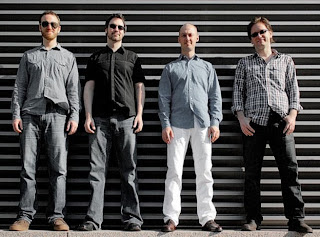You've got to admit they're getting bigger...a little bigger all the time
 In this age of miniaturization (with iPods getting smaller and laptops ever thinner) wind energy technology is headed in the opposite direction. In today's world, the most expeditious way for wind energy to compete economically with its fossil fuel competitors is for individual turbines and turbine arrays (windfarms) must get larger and more efficient. Cape wind has recently completed a 10-year permitting process for the development of a windfarm consisting of up to 130 3.6 megawatt turbines that were considered almost unbelievably huge a decade ago. (GW)
In this age of miniaturization (with iPods getting smaller and laptops ever thinner) wind energy technology is headed in the opposite direction. In today's world, the most expeditious way for wind energy to compete economically with its fossil fuel competitors is for individual turbines and turbine arrays (windfarms) must get larger and more efficient. Cape wind has recently completed a 10-year permitting process for the development of a windfarm consisting of up to 130 3.6 megawatt turbines that were considered almost unbelievably huge a decade ago. (GW)Vestas surprises with 7 MW offshore wind turbine
By Shida Chayesteh
LONDON (Reuters) - Danish wind turbine maker Vestas unveiled a new giant 7-megawatt offshore turbine on Wednesday and said it expected it to be in serial production in early 2015.
Vestas, the world's biggest wind turbine manufacturer by market share, had only been expected to unveil a 6 MW turbine, not the towering 135-meter (443 feet) 7 MW unit, with its rotor diameter of 164 meters.
The new turbine, whose rotor will trace a circle bigger than the London Eye ferris wheel and whose 80-meter blade is longer than nine London double-decker buses, is part of a push toward larger and larger units further offshore, where the wind power potential is high and public resistance can be avoided.
Shares in Vestas, already up before the announcement, rose as much as 3.5 percent and ended up 2.6 percent at 225.20 Danish crowns, outperforming a 1.7 percent rise in the Copenhagen bourse's bluechip index.
Chief Executive Ditlev Engel told a news conference in London that the new turbine, designed for North Sea conditions, was the first that Vestas has developed specifically for offshore wind parks and its single largest research and development ever.
Wind currently accounts for just 2 percent of the global energy mix, but Vestas expects it to provide 10 percent in 2020, Engel said in a presentation.
Most of the growth in offshore wind power capacity to 2025 will be in Europe, he said.
President of Vestas Offshore, Anders Soe-Jensen, told the news conference the company expected the offshore wind market to grow by 8.4 percent annually from 2015 to 2025.
The UK is the world leader in offshore wind power capacity, having overtaken Denmark, and the new turbine is expected to come in time for the big new British projects planned under Round 3 of the UK's licensing system, Vestas said.
"Just here in Britain, there are plans for 32,000 MW out at sea -- that is 10 times the total installed wind capacity of Denmark, so we are talking about a lot of money," Engel told Reuters on the sidelines of the news conference.
The first prototypes are expected to be built in the fourth quarter of 2012, Vestas Wind Systems A/S said in a statement.
"Serial production is set to begin in the first quarter of 2015, provided a firm order backlog is in place to justify the substantial investment needed to develop the new production and assembly facilities required for a turbine of this size," the company said.
CAPEX DEPENDS ON ORDERS
Engel said the company has not decided where to locate the new plant that would be needed to manufacture the turbine, and he added that the capital expenditure and location would depend on order commitments coming through.
Engel said Vestas had no orders for the new turbine in hand, though customers have been involved in the design process. He declined to say how big he expected sales of the new unit to be.
Alm. Brand analyst Michael Friis Jorgensen said: "The main thing we could have hoped for was more specifics on the investment needed to build up capacity for (this turbine)."
"They are saying they will look at orders and then decide on the investment," Jorgensen said.
Engel told Reuters that selling wind turbines has become similar to the practice in the airline industry where one sells on the basis of design and then builds the product once one has the backlog of orders to justify the big investment.
He said the plant would preferably be located near a port to facilitate transport.
Vestas's R&D chief Finn Strom Madsen said the new turbine would be equipped with a gearbox, unlike the gearless models being developed by some manufacturers.
"We are able to design direct drive solutions, but they are less attractive because they provide a poorer business case for our customers," Madsen said.
The new Vestas turbine has more than twice the capacity of the company's current biggest 3 MW unit, but is smaller than the world's largest 10 MW wind turbines being built by British, American and Norwegian engineers.
(Reporting via Copenhagen newsroom; writing by John Acher; editing by Elaine Hardcastle and Will Waterman)















